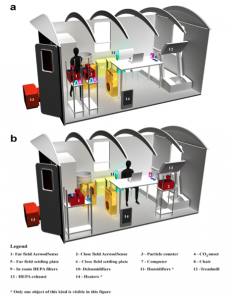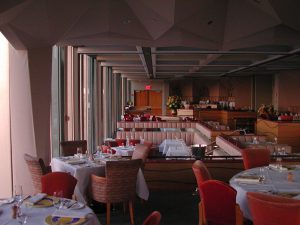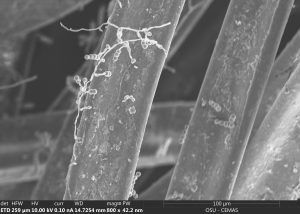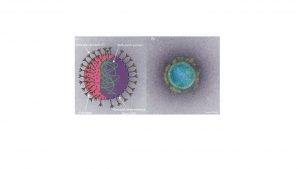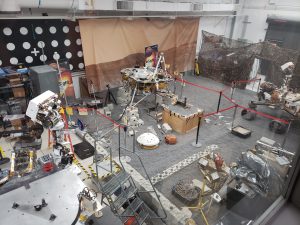New COVID Preprint out from BioBE: Preprint Link: https://www.researchsquare.com/article/rs-940891/v1 We recruited 11 participants that were diagnosed with COVID-19 and studied each for 3 days in a controlled chamber with multiple independent variables. We collected more than 2500 biological samples, particulates, and CO2 in near field (1.2 m) and far field (3.5 m) per each trial. Each …
The Biology and the Built Environment Center (BioBE) is currently seeking a post-doc to investigate fundamental questions surrounding the role of microorganisms (bacteria, viruses, fungi archaea, and protists) in the built environment and in relation to human health outcomes. Learn more and apply here. (https://careers.uoregon.edu/en-us/job/527294/post-doctoral-scholar-in-microbial-ecology)
The Senior Chemist – Healthy Home is responsible for development of next-generation technologies for the creation and management of a healthy home environment and microbiome, leveraging BISSELL’s unique position as a developer of both cleaning devices and chemical/natural based formulations. They assist in building department and product strategies, as well as being a liaison to …
We are pleased to announce the publication of our manuscript titled “Modeling microbial growth in carpet dust exposed to diurnal variations in relative humidity using the “Time-of-Wetness” framework” in the journal Indoor Air. This work is a culmination of research investigating how changes in relative humidity impact microbial growth in carpet dust. Our related study …
This paper in Nature is the first study to report size distributions of SARS-CoV-2 in air. Although the virus itself is 0.1 microns in diameter, we expect it to be released into air in droplets that span a wide range of sizes. The droplets will shrink to less than half their original diameter as some …
(h/t to Linsey Marr for posting about this on Twitter) Sometimes I have to double check to make sure I don’t post about the same article twice. I posted recently about an article describing transmission in a restaurant in Guangzhou, China. This new article, “Evidence for probable aerosol transmission of SARS-CoV-2 in a poorly ventilated …
Carpet serves as an important reservoir for dust exposure because it acts as both a source and a sink in the indoor environment. Carpets can also retain moisture and potentially support fungal growth. This is especially important for the roughly 8% of the US population that are affected by asthma, in addition to people affected …
(updated 4/7/20 with revised preprint and publication information) So late last week, the folks at the BioBE Center at the University of Oregon contacted us wanting to write a review of built environment considerations related to the 2019 Novel Coronavirus (COVID-19) outbreak. We worked furiously on it for a couple of days and through the …
So this last week, we ran a workshop on bacterial genomics at the Jet Propulsion Laboratory (JPL). Who is “we”? An amazing collaboration across several institutions. The whole thing was initiated by Dr. Parag Vaishampayan (NASA-JPL), who contacted myself (UC Davis), Dr. Elinne Becket (Cal State San Marcos), and Dr. Kenisha Johnson (Alabama A&M) about …
Skin-associated bacteria are abundant indoors. A comparison across studies shows that up to 30% of bacterial sequences detected indoors are associated with the human body (see Table 1 in this 2016 paper). I’ve been kind of skeptical that these sequences represented live organisms, however. Rather, I suspected the high proportion of sequences that were human-associated …
